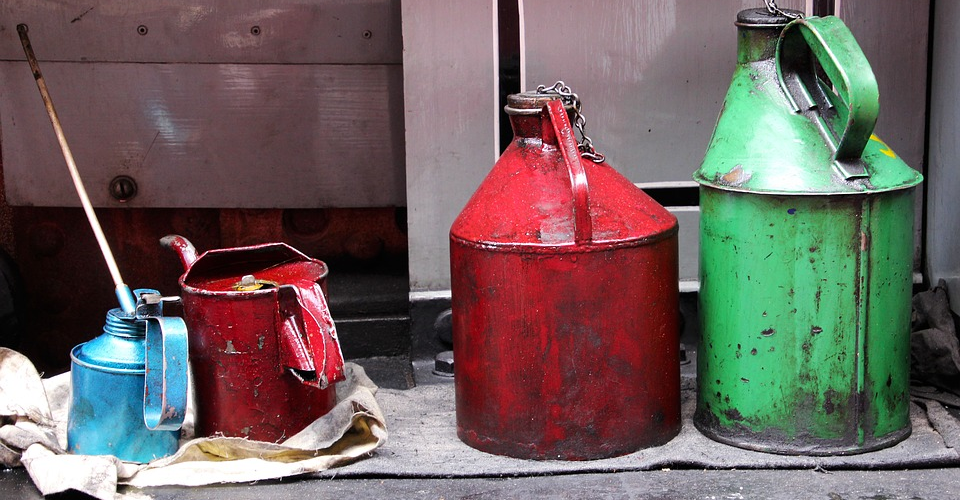Metalworking Fluids – Importance, Types, and Hazards
Metalworking refers to any process or technique that shapes or cuts metal to create useful parts or objects. It is a craft older than written history that has been refined through the ages. Modern metalworking benefits from tools that offer improved productivity, quality, efficiency, and safety.
One of these tools is called metalworking fluids. There is a wide range of metalworking fluids but most of them have the primary objective of providing both lubrication and cooling. How exactly do metalworking fluids work and what is the best fluid for each application? Do metalworking fluids pose hazards to workers?
What are metalworking fluids?

Metalworking fluids (MWF) refer to a group of fluids used in metalworking to provide lubrication and cooling. Aside from reducing friction and heat, introducing MWF to a metalworking process also helps in the removal of metal particles or “swarf.” MWF is also referred to as cutting fluid, cutting compounds, or simply oil or lubricant.
Most metalworking processes can benefit from the use of MWF. The selection of proper MWF for any given metalworking process will depend on the metal being used, the desired characteristics of the finished part, and process parameters like pressure, temperature, and speed. However, there are also metals that can be machined dry such as brass and cast iron.
The primary objective of MWFs is to keep the temperature of the piece stable during metalworking. Not only does this preserve the integrity of the workpiece but also helps avoid premature damage to the cutting tool. Some MWFs can also have special functions such as corrosion protection, prevention of smoke formation, or prevention of welding between the tools and workpiece.
Types of metalworking fluids
The word “fluid” is used in MWFs instead of oil or water. This is because MWFs are typically made of an engineered blend of different compounds, possibly including both oil and water. The use of oil-based compounds as a lubricant can be traced to ancient history. However, it is only around the past century when the industry realized the value of using liquid cooling in metalworking operations.
With this realization came the development of MWFs – specially formulated compounds that combined the lubrication of oils and the cooling property of water. These are essential oils that can form an emulsion in water or “water-soluble” oils.
MWFs can be classified into four broad categories:
- Neat oils refer to oils that have not been diluted and provide maximum lubrication. They are commonly used for heavy-duty operations or processes that use expensive cutting tools. Neat or straight oils are commonly made from petroleum, animal, or vegetable oils.
- Oil-in-water emulsions are engineered blends that provide a good balance of cooling and lubrication. The oil component (40% to 70%) of emulsions typically come from petroleum sources and are kept in solution by emulsifiers, giving them a characteristic milky appearance. Aside from reducing friction, the cooling effect of emulsions prevents metal parts from welding together.
- Semi-synthetic fluids refer to oil and water emulsions that have been enhanced with compounds such as fatty acids, sulfur, or chlorine. The chemical composition of these fluids can give them a host of advantages over natural oils. However, they are still less expensive than 100% synthetic fluids.
- Synthetic fluids are MWFs that contain no petroleum components. Instead, synthetic fluids are specially engineered molecule by molecule as a high-performance alternative to natural oils. Synthetic fluids are less prone to chemical oxidation, making them last longer than natural oils and have better fuel efficiency. Depending on the composition, synthetic fluids can be stable across a wider temperature range. The main drawback is that fully synthetic fluids are significantly more expensive than natural oils.
Gases such as CO2 and nitrogen have also been used in machining to provide cooling and aid in swarf removal. These can be viable alternatives in processes that do not require substantial lubrication.
Hazards of metalworking fluids
Workplace hazard is an essential factor to be considered when using metalworking fluids. When used in high-speed and high-temperature operations, MWFs tend to turn into aerosols. These can then be inhaled by workers. Absorption via skin contact is also possible when MWF aerosols adhere to tools and equipment.
Chronic exposure to MWFs can lead to a host of health conditions including chronic bronchitis, asthma, impaired lung function, and allergic dermatitis. There has also been some evidence that increased MWF exposure increases the chances of developing some types of cancer.
There is also a biological component in the use of MWFs. Spent MWFs are typically stored in a sump prior to reuse or disposal. During storage, these fluids tend to promote the growth of bacterial and fungal populations. Petroleum-based MWFs are particularly prone to this. If left unchecked, these biological colonies can pose more health issues to the workers.
According to the recommendations of the National Institute for Occupational Safety and Health, exposure to MWF aerosols must be kept below 0.4 milligrams per cubic meter of air. This has to be measured as a time-weighted average over 10 hours per day.
Metalworking facilities need to be equipped with machinery for the dispersal of MWF aerosols. Additionally, workers have to be provided with PPE such as gloves, aprons, safety glasses, and respirator masks. Some equipment have been outfitted with splash guards that can help reduce the aerosolization of MWFs.
There have also been efforts to formulate new MWFs that have less irritating additives and less toxic components. To stem bacterial growth, some MWFs can be treated with biocides. These measures are more preventive and provide longer-lasting solutions.
Final thoughts
Metalworking fluids have become as essential to the modern metalworking industry as high-precision cutting tools and CNC technology. Through the use of MWFs, friction during cutting and grinding processes can be reduced. MWFs also provide cooling, helping maintain the integrity of both the workpiece and the cutting tools.
As useful as they are in the metalworking process, MWFs are also considered a significant source of workplace hazard. Integrating the use of MWFs in a manufacturing facility means taking measures to reduce worker exposure and maintain the quality of the fluid sump.

